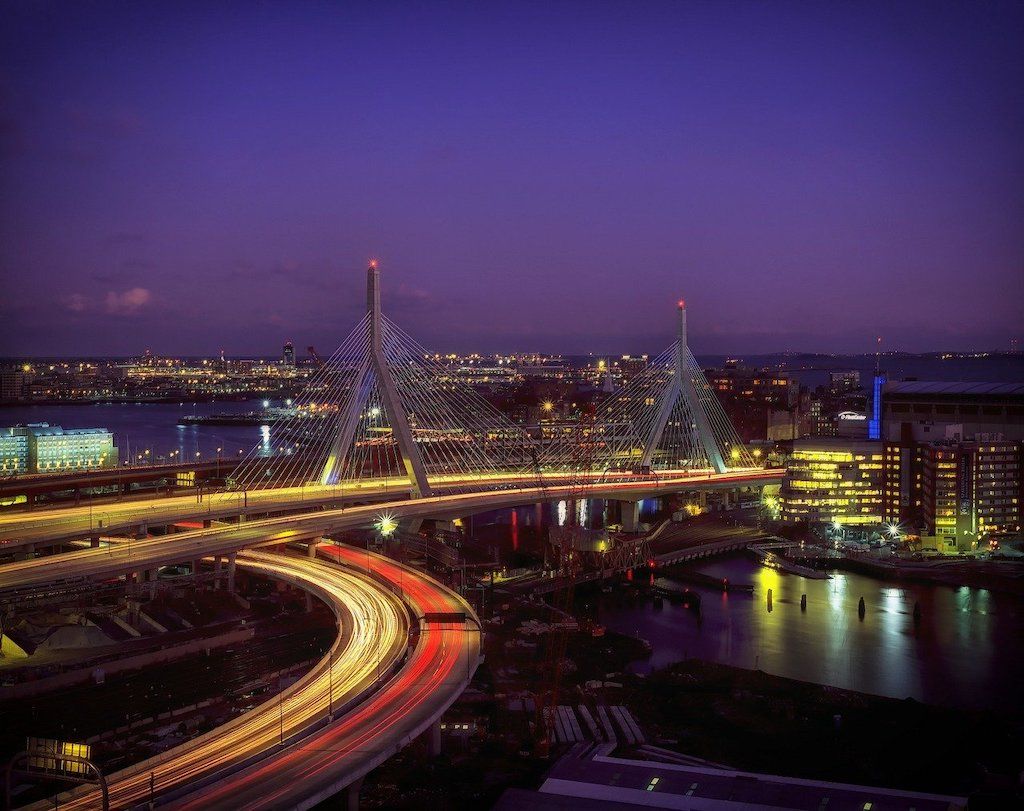This weekend I read Route 128, an out of print 1992 book that provides a retrospective on the 1980s “Massachusetts Miracle.” The book provides an engaging history of our high tech landscape, starting in the 1860s with the founding of MIT, and concluding in the early 1990s, before the start of the dot-com boom. Having recently read Scott Kirsner’s What’s the point of ‘Boston vs. Silicon Valley’, I thought it would be interesting to re-cap the narrative and conclusions of the authors, Susan Rosengrant and David Lampe.
Boston High Tech History
The underlying premise of Route 128 is that the long term success of the Massachusetts economy has been the result of the close association between a troika: academia, the federal government and private industry. The history starts with the Morrill Land Grant of 1862, which resulted in a rapid education expansion that made Boston the “Athens of America.” No university better led the way in the public-private partnership than MIT, founded 1861. But even before MIT, the entrepreneurial spirit of the local area ran deep, as demonstrated in its application to textile manufacturing, fishing, ship building, and even New England ice.
When World War II started, the unique academic and research infrastructure in eastern Massachusetts was leveraged in our national defense. The area became the center for research in microwaves for radar, which was second in federal research investment only to the Manhattan Project. This research resulted in the first practical digital computer, and sowed the early seeds of the US computer industry.
In the aftermath of World War II, the Route 128 highway was built around Boston, providing the transportation infrastructure to support the coming economic growth. At the same time, the public-private-academic partnership continued with the founding of Lincoln Labs, MITRE, and the Air Force’s Electronic Systems Division. The frugal 1950s were followed by rapid growth in the 1960s, followed again by an economic downturn in the 1970s.
Starting in the mid-1970s, Boston became the epicenter of the minicomputer revolution. The rapid growth in commercial demand for minicomputers created new local tech giants, including Digital Equipment Corporation, Wang, Prime Computer, Data General, and Apollo. This growth also spawned numerous spinoffs that helped solidify the transition of the local economy from its manufacturing base.
But the “miracle” was short-lived, as an underinvestment in early stage startups and the inability of the minicomputer manufacturers to respond to the personal computer shifted the balance of power in the Boston area. In a three year period, minicomputer manufacturers lost over 40,000 jobs, and the state ended the 1980s having lost its position as the most prominent high tech region in the US.
Advice from Route 128
The conclusions of the book are summarized in a section called Looking Forward. The authors’ advice for us, written in 1992, includes:
- Preserve & strength the educational and research infrastructure - Continue to work to attract the best talent to our schools, invest in academic research, and maintain a global perspective in our education.
- Recognize the special role of our unique high tech region - Maintain our investment in education and research infrastructure, and our active entrepreneurial community.
- Capitalize on the strengths of our state economy - Invest in strong primary and secondary education, market the state to private industry for research, and become thought-leader within academia, the federal government and private industry.
- Don’t over-manage the system - Let free-markets continue to build and maintain the diversity of the local economy.
- Celebrate the differences between academia, federal government and industry - Accept that the US system will result in partnerships within the troika, but never seamless cooperation.
- Encourage experimentation - Continue to explore new ways to harness the power of public-private partnerships to drive new innovation.
Conclusions
Many Boston high tech professionals will admit to a lingering wistfulness for the bygone years of our high tech dominance. In reading Route 128, I connected directly with this past. Our high tech roots run deep, and include firsts in almost all areas of our industry - from venture capitalism to computers to consulting.
While I doubt we’ll ever be content to being second best, maybe we can console ourselves that we are playing the long game. After all, by the time the Standford Industrial Park was started in the Silicon Valley, our first high tech startup (Saugus Iron Works) had been founded a full 305 years in our past. ;)
Related Posts: Does Boston Have An Entrepreneur Gap?, Boston Venture Investing By the Numbers, Top 5 Boston High Tech Coffee Shops, My Tech In Boston Podcast
